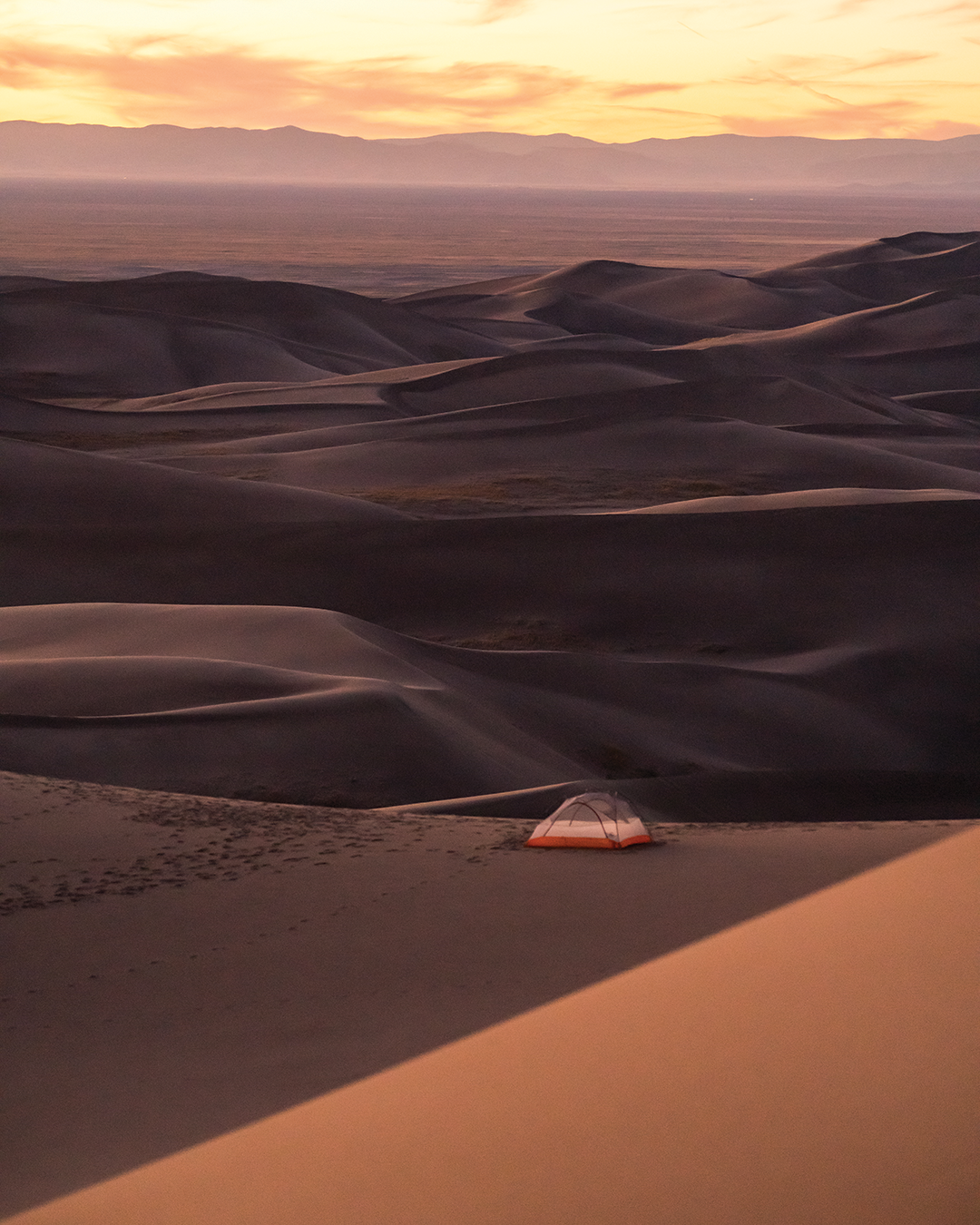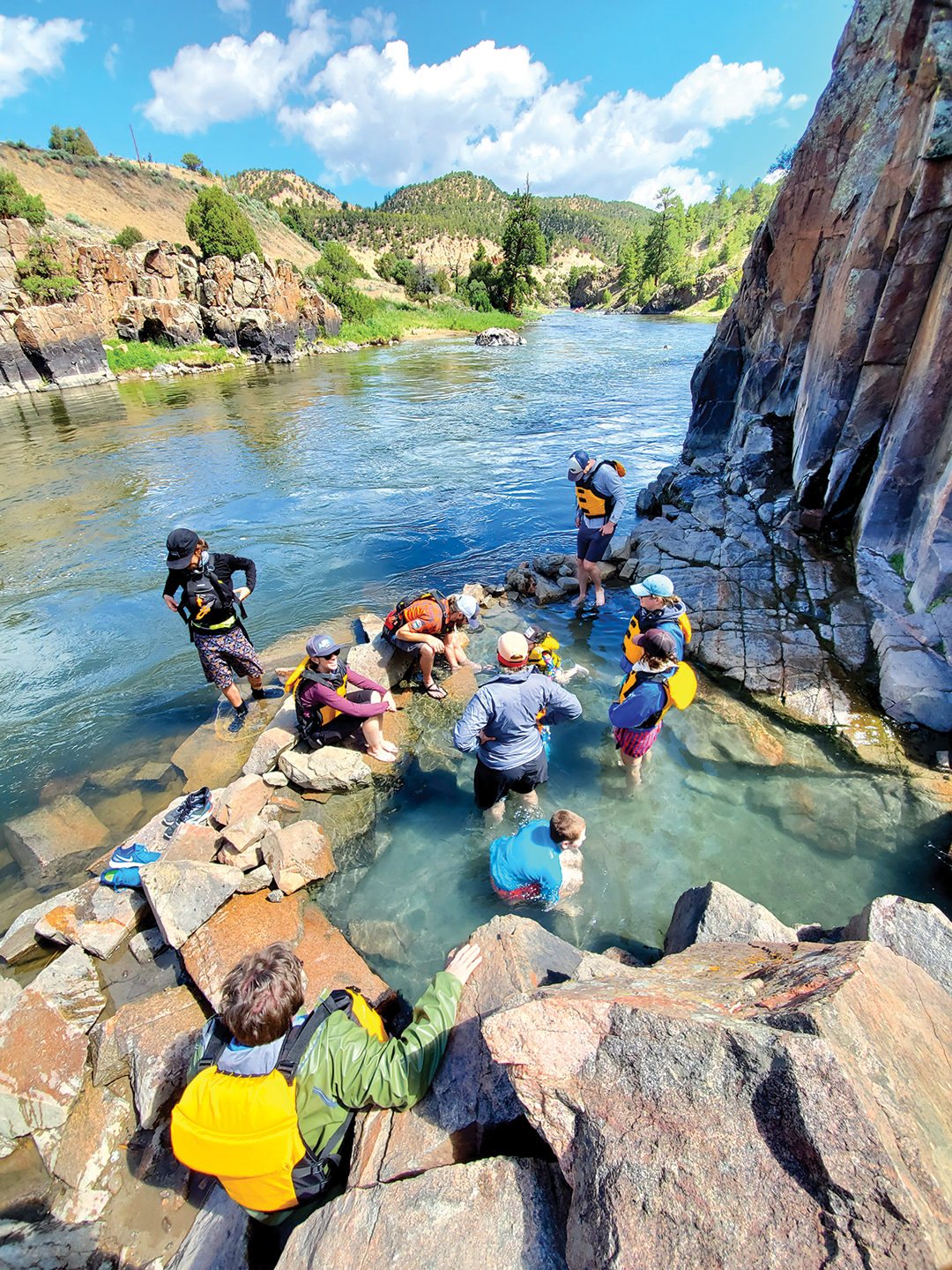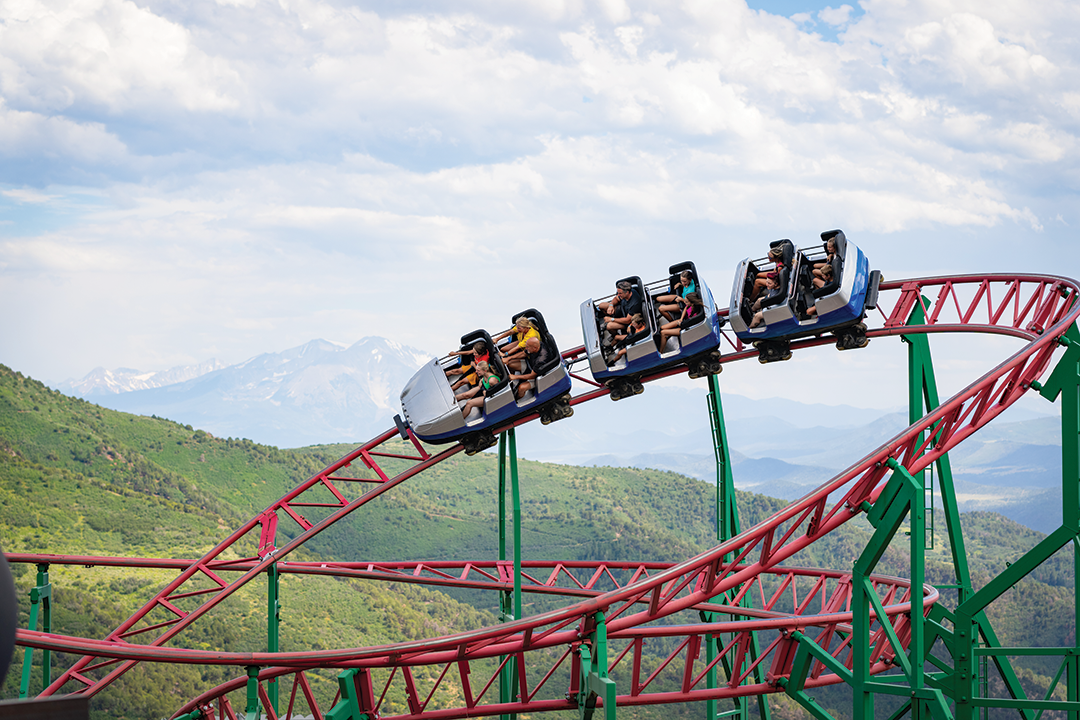Cliffhanger Rollercoaster at Glenwood Caverns Adventure Park.
Photo courtesy of Visit Glenwood Springs.
Between living and working at popular destinations in the high country off Interstate 70, Scott Mahoney never tires of finding new nooks and crannies to explore.
“Gosh,” he says, “there are just so many little gems” hidden away in the state’s mountains and valleys.
“We have so many cool little mountain towns that have everything,” says Mahoney, who co-owns Colorado Rafting Company and Colorado Adventure Guides.
Mahoney’s businesses offer outdoor education and guided adventure tours in Summit and Grand counties. His team takes visitors rafting, hiking, mountain biking and on trendier excursions, like stand-up river paddleboarding.
He and other tourism professionals have a few suggestions for fun summer destinations that are no more than a half-day drive from Northern Colorado.

Great Sand Dunes National Park. Photos courtesy of Visit Alamosa.
See the sand and stars in the San Luis Valley
Adventurers staying on top of 2025 travel trends may want to consider a trip to the San Luis Valley, says Carly Holbrook, a spokesperson for the Colorado Tourism Office.
The Great Sand Dunes is one of about a dozen Colorado areas drawing visitors for its designation as an International Dark Sky Place, which recognizes destinations for the quality of their night skies and their commitment to natural preservation and education. The dunes are a great place to view the stars due in part to the Sangre de Cristo Mountains, which shelter the park from much of the glow created by Colorado’s Front Range cities, according to the global organization DarkSky International.
Those intrigued by astrotourism need only the naked eye to view the beautiful night sky, but those wanting to take things a step further can bring a telescope or check out the Kosmos Stargazing Resort and Spa, which Holbrook describes as “one of the most anticipated lodging openings in Colorado this year.” The resort boasts 20 luxury, telescope-equipped villas and an onsite planetarium and observatory.
Visitors to the valley should also stop in Monte Vista, a small town that was once a stop for the Denver & Rio Grande Western Railroad, according to the Colorado Tourism Office. The town serves as a great jumping-off point for day trips to explore the area’s several 14,000-foot peaks such as Little Bear and Blanca, and the area is well-known by wildlife enthusiasts for the Monte Vista National Wildlife Refuge. Visitors in July can also catch Colorado’s oldest pro rodeo, the Ski-Hi Stampede.
The dunes themselves make up a high-altitude desert that looks like a giant sandbox, offering a variety of unique experiences, like sandboarding and sand sledding, according to the National Park Service. Visitors who come earlier in the season can cool off in Medano Creek—a seasonal creek formed by snowmelt that dries up by July—and they also have easy access to outdoor activities such as horseback riding, four-wheeling and hiking, Holbrook says. Nearby are hotspots for fishing, biking and Jeep rentals.

Glenwood Hot Springs Resort. Photo courtesy of Visit Glenwood Springs.
Relax or spend family time in Glenwood Springs
Glenwood Springs is perhaps best known for its hot springs, a natural source of thermal spring water that has been drawing visitors to the area since 1888. The Glenwood Hot Springs Resort added five new mineral pools to its offerings last year at varying temperatures, building on the long-touted characteristics of waters that are said to bring benefits like reduced stress and anxiety, reduced inflammation, faster muscle recovery and better circulation, according to the resort’s website.
In June, the resort will open its newest boutique hotel—Hotel 1888—featuring 14 luxury guest rooms and two high-end suites, says Lisa Langer, tourism director for Visit Glenwood Springs.
Travelers looking for a spa experience can also check out the lesser-known Yampah Spa & Vapor Caves, Langer says. The main level offers spa treatments, including body wraps, facial scrubs and massages, while the underground space offers visitors a chance to sit in a geothermal cave and take in the hot vapors of Yampa Springs, the same springs that draw visitors to the mineral pools.
An alternative spa option opening in late summer is the Bohemian Bier Spa, which builds on the growing popularity of using beer botanicals for their therapeutic advantages, Langer says. The spa sells local beer and wine and offers private rooms equipped with rain showers, infrared saunas and tubs for customized soaks incorporating barley, hops, yeast and more.
Although Glenwood Springs is most often visited for its hot springs, Langer recommends the Glenwood Caverns Adventure Park, a Western-themed park on a mountain complete with roller coasters, thrill rides and activities such as laser tag and a 4D motion theater. Reaching the amusement park is its own adventure involving a five-minute ride in a fully enclosed gondola.
“It’s something I tell people they should definitely do because it’s just…so well done up there on the mountain,” Langer says.
Glenwood Springs is also home to the Glenwood Vaudeville Revue, a family-oriented dinner theater show Langer says is another hidden gem. And history buffs can’t miss the short hike from town to Doc Holliday’s gravesite, the final resting place of a major character in American folklore, she says. Those looking for a tougher hike can reserve a time for a steep, one-mile trek to one of the prettiest spots in the state: Hanging Lake.
This summer, those wanting an alternative ride to Glenwood Springs can check out new offerings with the Rocky Mountaineer luxury train. The rail line historically stopped in Glenwood Springs during a trip between Denver and Moab, but it has introduced two shortened packages that travel from Denver to Glenwood Springs and back, according to the Colorado Tourism Office.

Upper Colorado River rafting day trip with Colorado Rafting Company.
Camp and raft in Colorado’s ski country
Summit County may be known as a destination for skiing, but it also serves as a home base for some of the best rafting in the state. Plus, there are a few new attractions worth checking out when you aren’t cruising on a river.
Mahoney, with Colorado Rafting Company, says one of his favorite spots is the Upper Colorado River, which he describes as a float trip appropriate for almost all ages. His business even offers stand-up paddleboarding on that stretch of the river. It has some class II and class III rapids that are classified as mostly easy, small waves that require a few points of maneuvering rather than floating.
“The chances of coming out of the boat are pretty slim, but you still get to have the whitewater experience,” Mahoney says.
Colorado Rafting Company offers full-day, half-day and overnight trips that take off from its boathouse at Rancho Del Rio in the neighboring Eagle County, about a 40-minute drive from Vail. Other rafting options include the Blue River, a shorter float that has both relaxing and exciting legs, and Clear Creek for more traditional whitewater farther east, Mahoney says.
For those not looking to raft, Mahoney says Rancho Del Rio is still one of his favorite mountain spots. The guest ranch rents out cabins and campgrounds for lodging, and the area is surrounded by public lands, he says. Anyone staying in the area can rent kayaks or stand-up paddleboards, and they can take advantage of Rancho Del Rio’s shuttle service, which picks people up downstream and brings them back to the boathouse. There’s also a hiking trail that leads to warm springs that are usually accessible by midsummer, and the ranch has a general store, a river trinket store and a package store that sells beer and wine. During the summer, Mahoney says there is live music nearly every Saturday night.
Nearby trails for hiking include Elliot Ridge, Snow Mountain Ranch and Wolford Mountain Reservoir, which offers its own hub for boating, water sports and fishing.
A hidden discovery in nearby Park County is the recently preserved and reopened North London Mill, a historic gold mining site from 1883 that is now open to rent overnight as a backcountry hut, Holbrook says. Referred to as NoLo, the preserved building is about a 25-minute drive from Breckenridge in the small town of Alma and hosts a few public events and workshops during the summer.
After rafting, hiking or other outdoor exploration, weary travelers can stop in Breckenridge to sample the food of Matt Vawter, the head chef at Rootstalk and Radicato restaurants. Last year, Vawter won the James Beard Award for best mountain chef. Located in the heart of Breckenridge, Rootstalk serves new American cuisine, and Radicato serves modern Italian.
Those who can’t decide on a destination need not worry, Mahoney says. Tourism is a core business in the mountains, meaning new discoveries are around every corner.
“You’ve got your breweries, and you’ve got your restaurants,” he says. “All these mountain towns have been built to take care of people on vacation.”







